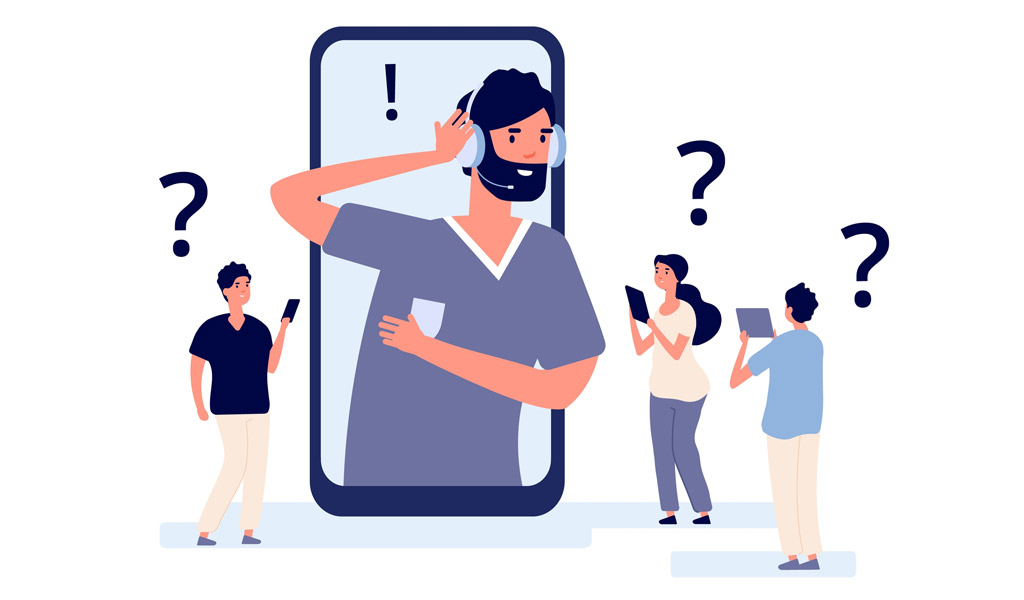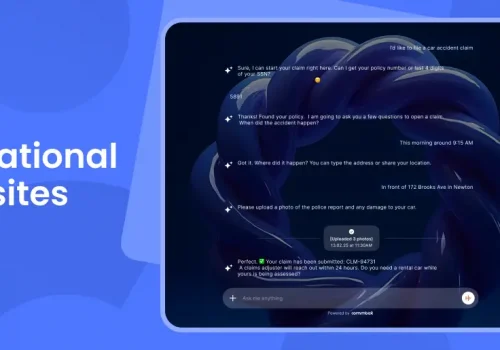Whether it’s in your personal life or professional life, you’ve probably dealt with unresponsive people. Sometimes you build up a rapport with someone, and everything seems to be going well. Then, with no explanation, they just stop responding. You have been ghosted!
Being ghosted can be extremely jarring and unsettling, even for the most resilient among us. Why? Because we suddenly feel out of control. We were sure we were going to land that sale or that customer was about to make that second purchase. But now they’re not responding, so suddenly all the assurance is gone. You’re left wondering what happened. Was it something you said? Something you did? Are you doomed to repeat this mistake again? The key to overcoming unresponsive customers is to push forward and take action. Here are 7 things you can do when faced with unresponsive customers.
What is an Unresponsive Customer?
First, it’s important to define what an unresponsive customer is and where customer engagement really starts. Do you consider the first point of engagement to be when the customer interacts with your website or other touchpoints? Do you consider it to be when they first make contact with your sales or customer service team. It’s more practical to use the latter as the true first point of engagement. Why? Because this person has shown a real desire for your product. If they have talked to a member of your staff, then you can be confident that they have already weighed up their decisions for a product and are heavily considering your product as the solution to their problems.
The stakes for unresponsive customers are much higher the longer your sales journey is. Typically, companies that sell SaaS or more expensive B2B products are more vulnerable to unresponsive customers than companies that sell an abundance of lower-cost items. When buying expensive products or signing up for long term financial commitments, customers take longer to make a decision. This just makes sense. They want to make the right decision the first time around. They don’t want to experiment with lots of different services, they just want to find that one perfect service that will meet their needs.
A customer can be considered unresponsive if you have already established a connection with them, and they then fail to respond to repeated attempts at further engagement.
What Causes Unresponsiveness?
Unresponsive customers cause frustration for employees and harm future revenue, but why does it happen in the first place? Like most questions in business, there’s no one simple answer to this question. But that doesn’t mean we are clueless as to why it happens or that we don’t know how to fix it. With that in mind, here are the top reasons that unresponsiveness occurs:
- Their inbox is overflowing with emails – It’s estimated that 121 business emails are sent and received every single day. If your customer receives a lot of emails, they might not even see yours if it’s mixed in with all the rest.
- They are busy – Sometimes we get busy and our priorities shift. Maybe they were interested in your product a week ago, but right now they can’t engage with you for lack of time or energy.
- They have moved on – They have found a different solution to their problem, possibly from a competitor.
- Incompatibility – There’s something about the communication that the customer was uncomfortable with. This can be something as simple as the level or type of contact (the customer feels they are being spammed with emails, or they prefer not to talk on the phone, and this is your primary mode of communication). Or it could be something the sales agent said that the customer found offensive or made them uncomfortable. They may have heard something negative about your company from friends or family, or even online reviews. It’s also possible that they researched your company and found your views are incompatible with theirs due to your business practices or the charities you support.
- They no longer need the product or service – This was more of a want than a need for the customer, and they have decided to hold off on the purchase for now.

7 Things You Can Do When Faced with Unresponsive Customers
1. Persist
It’s estimated that it takes an average of seven sales calls to secure a deal. If you have only had a few calls and then the communications drop, don’t be dissuaded. There are ways to speed up the process to close a deal in fewer than seven steps. For example, you can try:
- Asking “yes” or “no” questions – Building a rapport is important and is usually done with open-ended questions. However, “yes” and “no” questions can help you determine where your customer stands.
- Set deadlines – Some people don’t respond until they see a deadline is looming. If you say “please respond by Friday at noon” then you may give these people, the push they need.
- Express concern – Asking the customer is everything okay because you are concerned about their lack of responsiveness.
Just remember that there’s a fine line between being persistent and being annoying. This line exists in a different place for everyone, so there’s no definitive way to avoid being perceived as annoying. This is why the seven call (or communication) rule is a good guideline. Attempt to reach out a total of seven times, but after this, it might be time to move on.
2. Send a Calendar Invite
This is an effective strategy for SaaS, B2B, or companies that sell expensive products. When you send your first email after establishing contact, include a calendar invite with a short message like “I’ve scheduled in a meeting to get things started, but let me know if there’s a better time for you”. This shows that you’re committed to listening to the customer and understanding their needs. It also shows that you respect their time and want to handle this situation as efficiently as possible. However, it’s also important to recognize when this would be inappropriate. For example, it wouldn’t make sense to send a calendar invite for a simple question that can be answered over email.
If the client has become unresponsive, a calendar invite can be a great way to get everything back on track. The client may have missed your emails or not set aside the time to respond to you. If you take control of this situation and provide them with dedicated time, they might find it easier to manage.
3. Use Scheduling Tools
A key part of maintaining a relationship with customers is regular contact. It can be easy to forget that you need to send a customer an email or give them a call. But every time you forget to reach out, you potentially push the customer towards a competitor. With a scheduling tool, you can send regular emails without even thinking about it. You can also use scheduling tools that allow the customer to arrange a time to call you. This asks for a little more effort from your customers, but it ensures that they get a time slot that works for them.
4. Always Schedule a Follow Up
You should never end a meeting or communication without setting a time for the next one. This is another one of these scenarios when it’s easy to forget about the next steps. Sometimes after a call, and especially one that went well, we feel on a high. We congratulate ourselves for pushing the connection forward, and we put our feet up. By the time you remember you need to make contact again to secure the deal, it could already be too late.
Scheduling a follow-up is a great way to hold yourself and the customer accountable for moving forward. You will also get into a better routine with customer communication and it will become automatic.

5. Analyze Your Emails and Other Communications
If your customer has suddenly gone quiet, then you may have either said something wrong, or they might be missing your emails. Let’s break these down.
Missing Your Emails
Your emails might be landing in their inbox but getting lost in the sea of other emails. Your emails might simply be not standing out. The key here is to make your emails eye-catching, so the customer feels compelled to open it and respond to you. It all comes down to the subject line. Here are some tips for writing a good subject line:
- Be real – This means be personable and to the point. For example, “Hey! Our new product has your name all over it” or “Hey [name], have you checked out our product yet? It’s a good fit for you”.
- Be short and concise – The body of the email is where you can go into more detail. The subject should be short enough that the customer can read it with a quick scan across their inbox, but also intriguing enough that they want to click it.
- Ask questions – When you ask a question, people want to answer.
- Number your requests – When you are trying to re-establish contact, it’s a good idea to number your requests. For example, “Second request” or “Latest meeting invite”. It makes you appear more human and aware of what’s going on. Of course, you don’t want to make your customers feel guilty, but they might feel more compelled to respond if they think a real person is sending these emails.
Something is Wrong
Analyze your previous communications to see whether there’s a point where the communication dropped. For example, do you find that most customers turn away once they reach a certain point? Is it when you mention that your product doesn’t have a particular feature? Asking these questions can help you get to the bottom of the unresponsiveness and also give you the answer about how to proceed next. You can either address their concerns in your next email, or ask them whether everything is okay.
6. Remember that It’s Not Always You
Some people get busy and they just don’t have time to respond. It’s not always personal when communication suddenly stops. It’s still good practice to review your previous communications to see if there’s a pattern, but there won’t always be one. You have to remember that your customer is probably getting several emails from other businesses too and has things to deal with in their personal lives. You should establish regular contact and try to check in with them, but don’t become disheartened if you don’t always get a reply when you want one. If you take the situation too personally, you risk going overboard and annoying the customer. It’s not always appropriate to ask if they are okay. For example, if they haven’t responded for a day, then they could just be busy.
7. Keep Customers Up to Date
This can be things like sending a recap after a previous communication or sending regular emails to keep them up to date with your business. Customers want to keep in contact with businesses that are active and energetic. If they see you are constantly progressing and are always available to talk, then they’ll be more likely to re-establish communication in the future, even if they can’t right now.




















